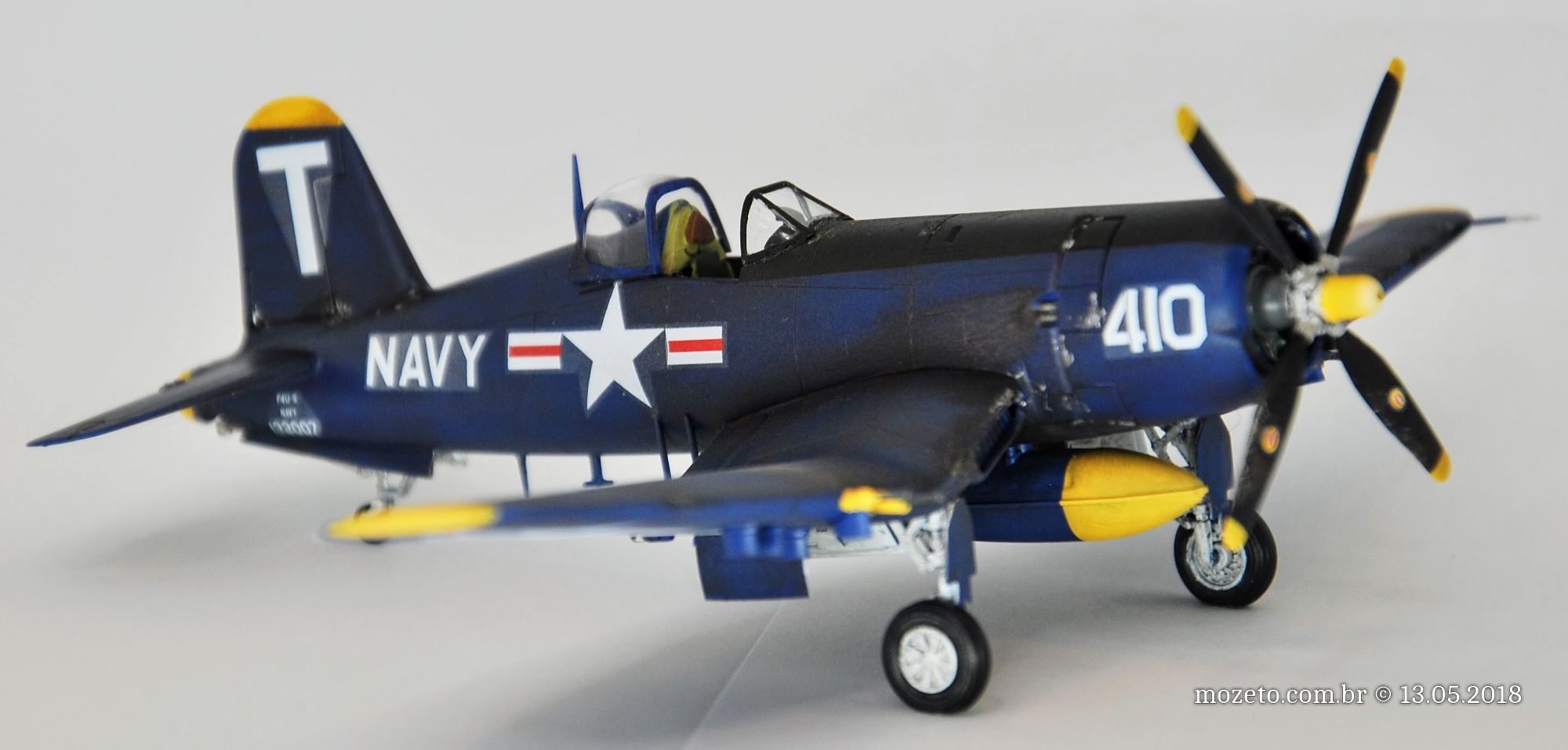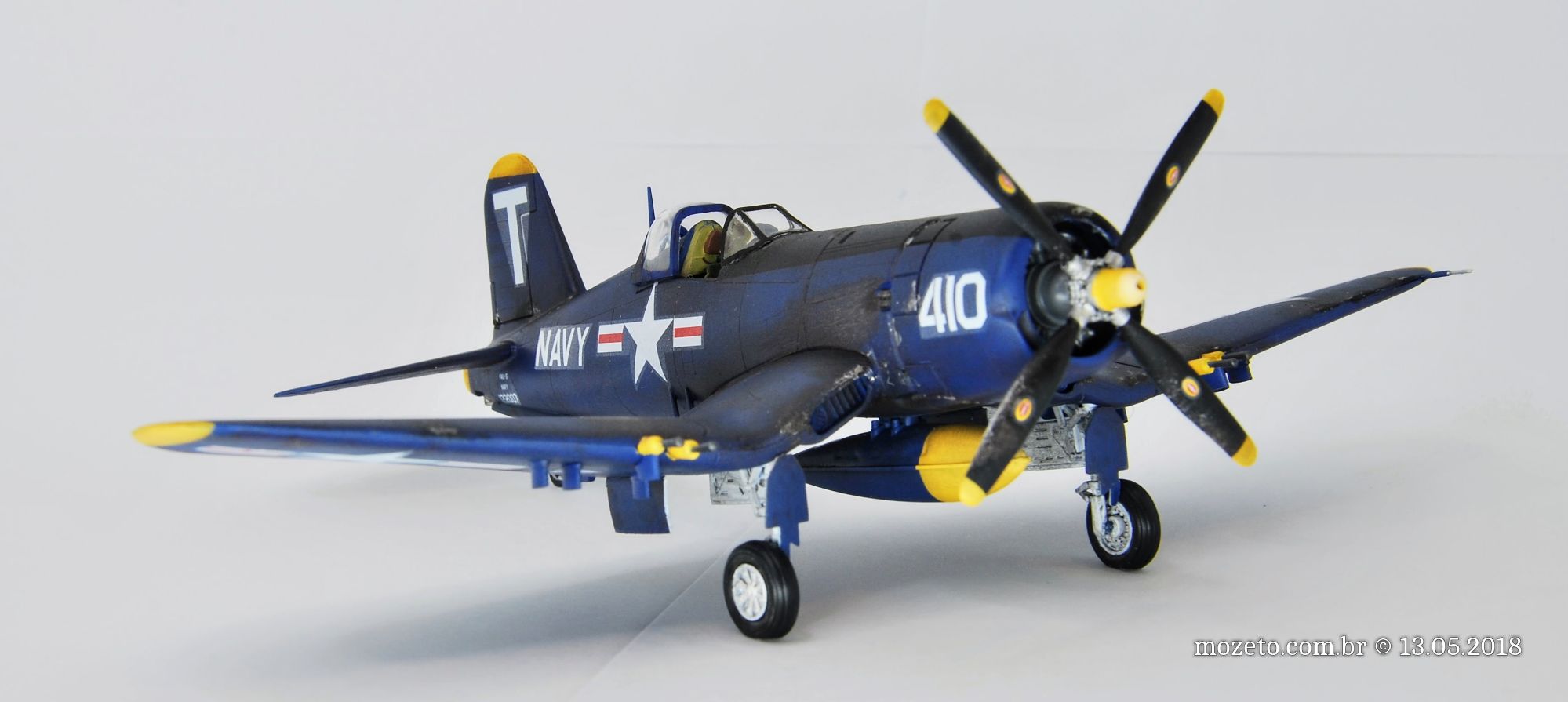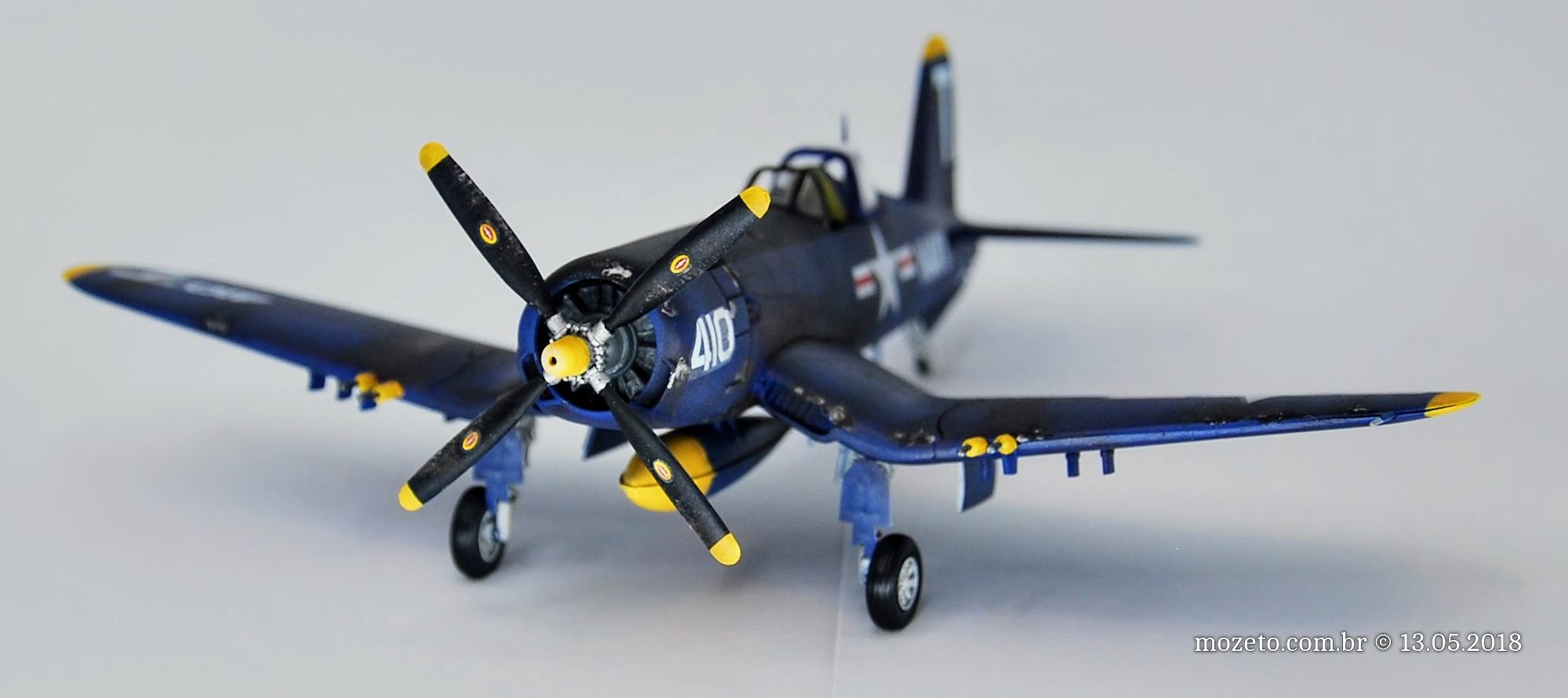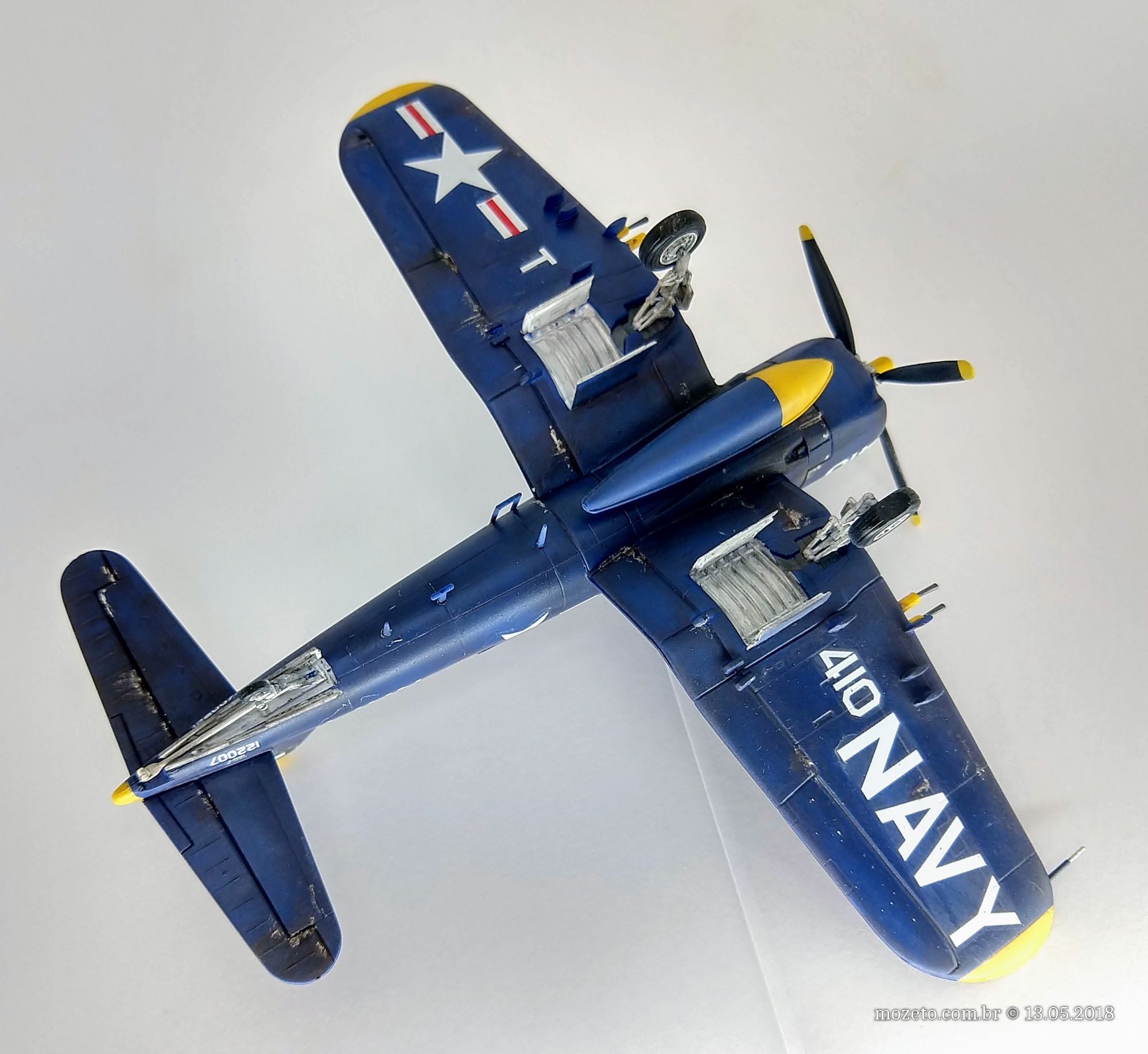











































The wing shape in the F4U Corsair is called the inverted gull wing. The main reasons for use of this is the large propeller used in the aircraft. The Corsair design was in response to the US Navy RFP (Request for Proposal) in 1938, which mandated the following things:
In order to achieve this, the Vought engineers used the largest available engine, the Prat and Whitney R2800 Double Wasp radial engine (this was done as the Navy, in a change of heart, vowed to consider designs with liquid-cooled engines, in contradiction with a policy settled in 1927 that required air-cooled engines for shipboard aircraft). Also, the wing area of F4U was the largest naval aircraft of its time. During design, the oil cooler and supercharger inlets were moved to wing leading edges. In order to extract power from the engine, a large (~4m dia) propeller was chosen. This large propeller caused problems with ground clearance, which necessitated an increase in the landing gear length. The Vought team overcame this by choosing an inverted gull wing, which starts out with a strong anhedral, and then curved upwards to strong dihedral, with landing gear at the lowest point in the bend. source.














































































